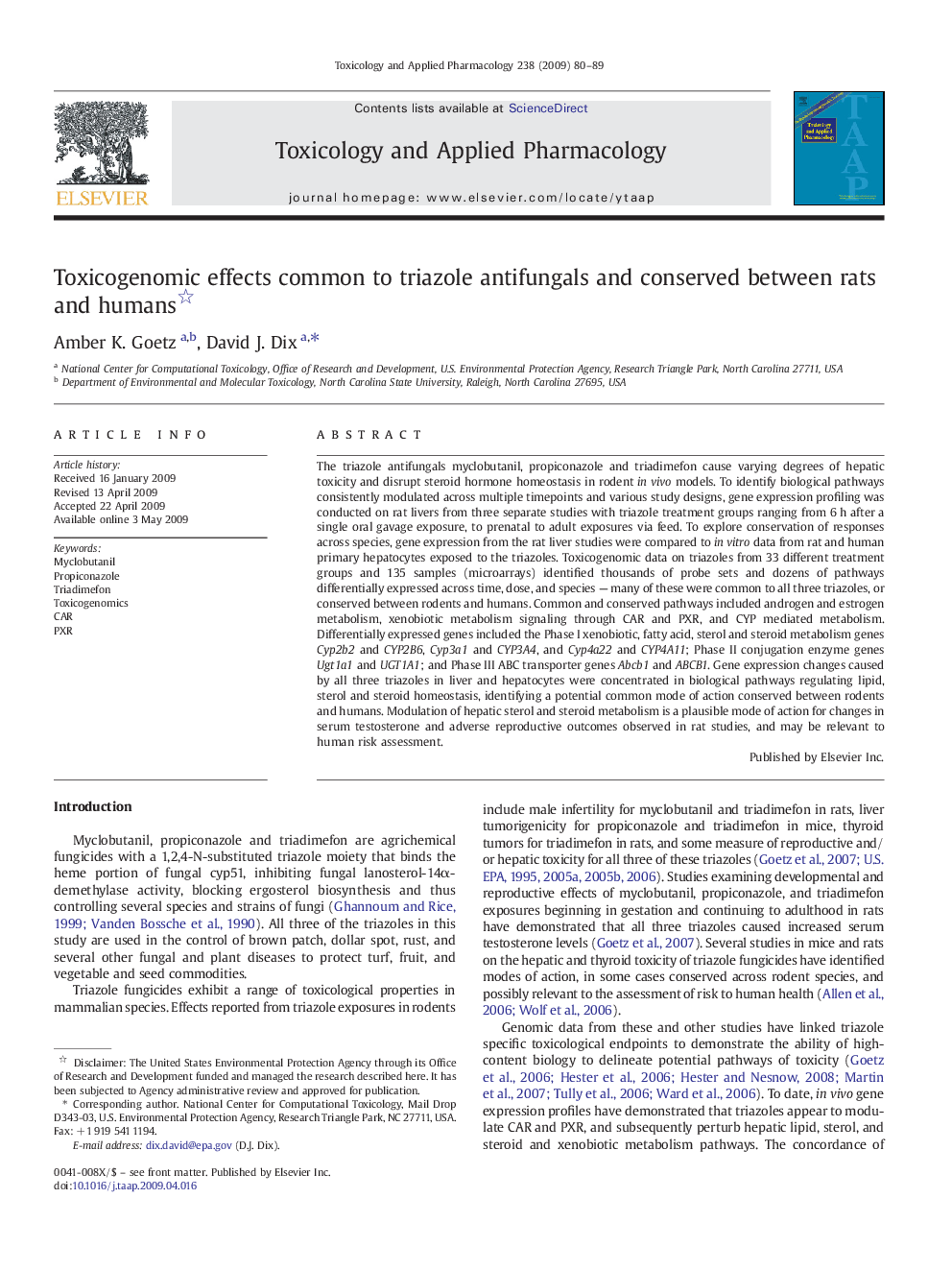| کد مقاله | کد نشریه | سال انتشار | مقاله انگلیسی | نسخه تمام متن |
|---|---|---|---|---|
| 2569946 | 1128558 | 2009 | 10 صفحه PDF | دانلود رایگان |

The triazole antifungals myclobutanil, propiconazole and triadimefon cause varying degrees of hepatic toxicity and disrupt steroid hormone homeostasis in rodent in vivo models. To identify biological pathways consistently modulated across multiple timepoints and various study designs, gene expression profiling was conducted on rat livers from three separate studies with triazole treatment groups ranging from 6 h after a single oral gavage exposure, to prenatal to adult exposures via feed. To explore conservation of responses across species, gene expression from the rat liver studies were compared to in vitro data from rat and human primary hepatocytes exposed to the triazoles. Toxicogenomic data on triazoles from 33 different treatment groups and 135 samples (microarrays) identified thousands of probe sets and dozens of pathways differentially expressed across time, dose, and species — many of these were common to all three triazoles, or conserved between rodents and humans. Common and conserved pathways included androgen and estrogen metabolism, xenobiotic metabolism signaling through CAR and PXR, and CYP mediated metabolism. Differentially expressed genes included the Phase I xenobiotic, fatty acid, sterol and steroid metabolism genes Cyp2b2 and CYP2B6, Cyp3a1 and CYP3A4, and Cyp4a22 and CYP4A11; Phase II conjugation enzyme genes Ugt1a1 and UGT1A1; and Phase III ABC transporter genes Abcb1 and ABCB1. Gene expression changes caused by all three triazoles in liver and hepatocytes were concentrated in biological pathways regulating lipid, sterol and steroid homeostasis, identifying a potential common mode of action conserved between rodents and humans. Modulation of hepatic sterol and steroid metabolism is a plausible mode of action for changes in serum testosterone and adverse reproductive outcomes observed in rat studies, and may be relevant to human risk assessment.
Journal: Toxicology and Applied Pharmacology - Volume 238, Issue 1, 1 July 2009, Pages 80–89